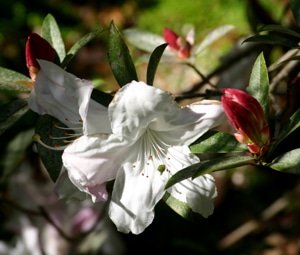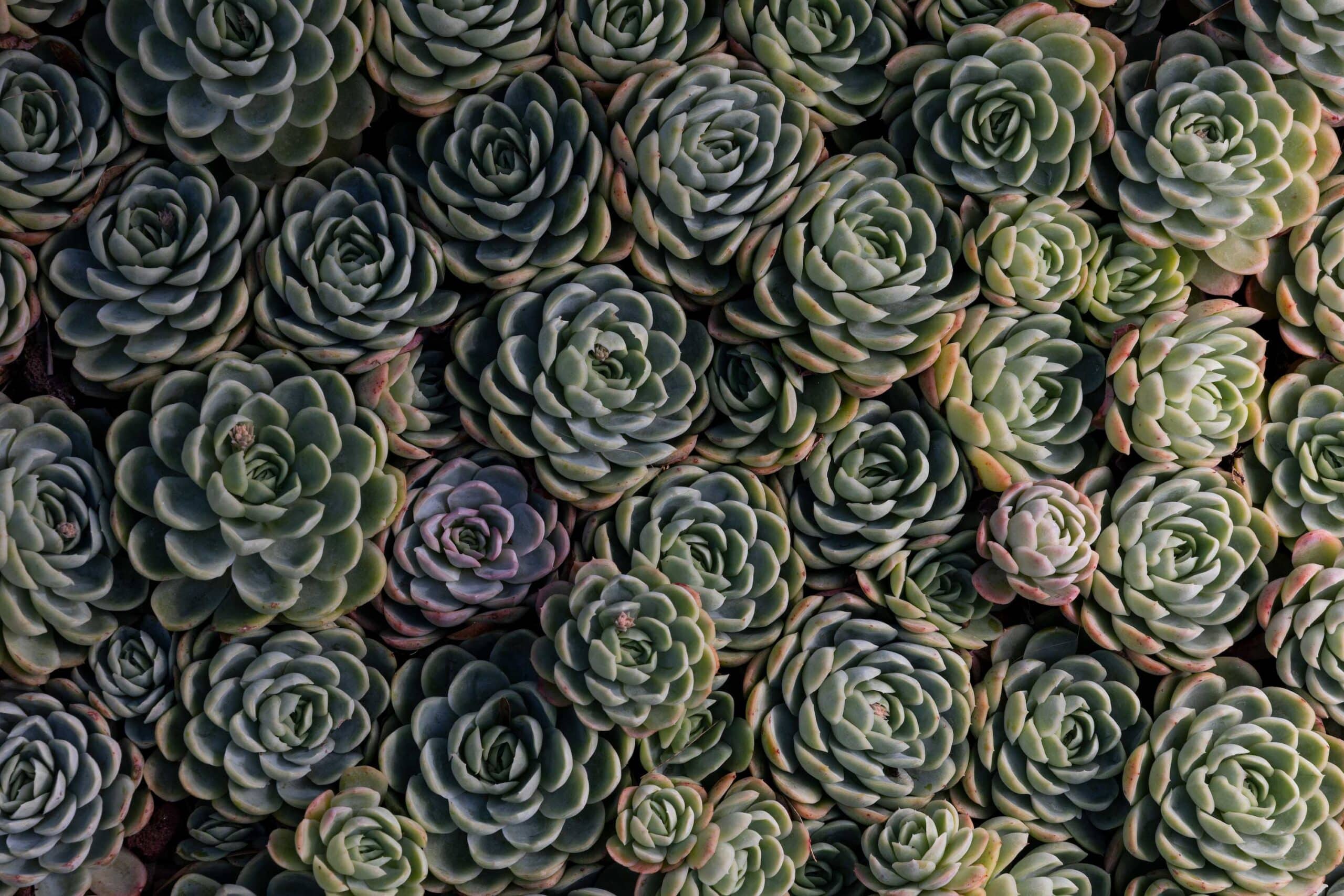
Plant Highlights
March
-
Halleria lucida
African honeysuckle, tree fuchsia, white olive, umbinza, notsung
Highlight Month:
March
Nativity:
The range of H. lucida extends from South Africa to Ethiopia and into Yemen. The genus Halleria belongs in the Stilbaceae family and contains five accepted species with two endemic to Madagascar.
Growth Habit:
Halleria lucida is a small evergreen tree/multi-stemmed shrub. It produces masses of red to orange bilabiate (2-lipped) flowers borne cauliflorously on the trunk and in the leaf axils of younger branches. Watch out for hummingbirds vying for access nectar when this plant is in bloom from late winter to summer. The fruits are green, marble-sized, and mature to a purple-black color. They are edible but have a sickly-sweet astringent quality. This species produces trailing branches with arching stems and the bark is greyish brown with shallow longitudinal fissures.
Growing Requirements:
H. lucida can reach heights of 8-15 feet in the garden but can be coppiced to maintain a shrubby appearance. It is hardy to USDA Zones 9a to 11 and grows best in full to part sun and with regular water.
Features:
In habitat, it is pollinated by sunbirds, other nectar-feeding birds, and insects. The Zulu people use the plant for treating skin and ear conditions and it is believed to have protective properties against evil and witchcraft. They drive stakes of Rhamnus prinoides (shiny-leaf buckthorn) covered with a mixture of H. lucida ash and crocodile fat around their village perimeters. Carl Linnaeus named the genus Halleria in 1753 in honor of 18th century Swiss scientist Albrecht von Haller (1708-1777). The specific epithet, lucida, comes from the Latin adjective lūcidus, meaning bright and shining, in reference to the glossy green opposite leaves.
Where at Lotusland:
Lotusland’s plants were propagated from seed donated by Kirstenbosch National Botanical Garden in 1993. H. lucida can be found at the perimeter of the Cycad Garden and in the Tropical Garden.
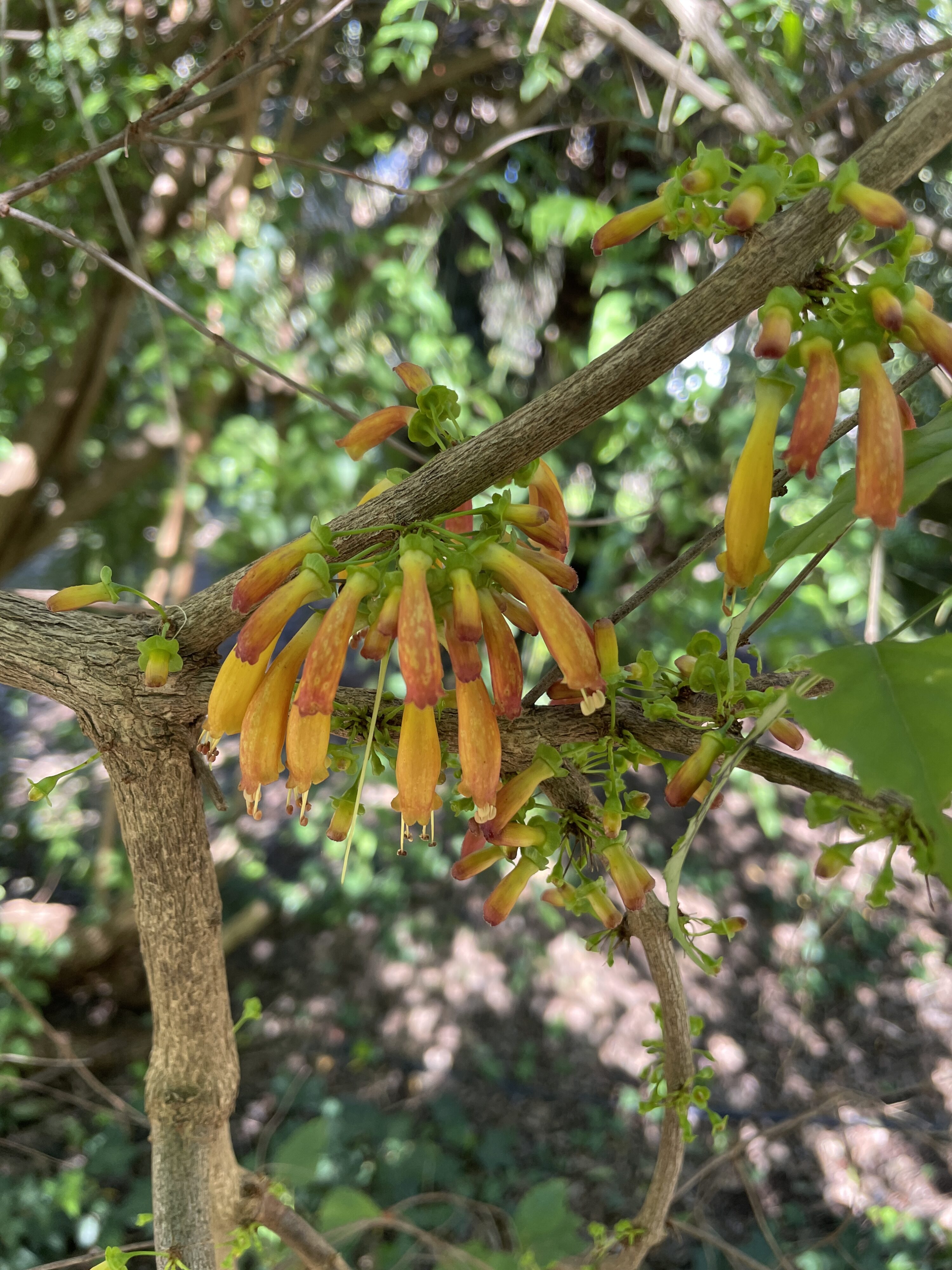
-
Saxifraga stolonifera
strawberry begonia, strawberry geranium, roving sailor, creeping rockfoil, creeping saxifrage
Highlight Month:
March
Nativity:
Strawberry begonia is native to shady cliffs at lower altitudes in China and Japan.
Growth Habit:
Low, creeping herbaceous perennial.
Growing Requirements:
In the garden, S. stolonifera appreciates a cool, shaded nook with rich soil and regular watering. This plant is hardy to USDA Zone 6 with some protection. Alternatively, S. stolonifera makes an excellent houseplant when provided with bright, indirect sunlight.
Features:
The fuzzy leaves are a lovely deep green with flashes of silver venation and pinkish-red undersides. Each leaf extends from the basal rosette on a reddish petiole. In late spring and early summer, breezy panicles of white and pink flowers adorn the plant. The individual flowers have three pink upper petals and two larger white lower petals. The flowers stand about 12-18” above the leaves. S. stolonifera spreads via reddish stolons tipped with small plantlets. Consider growing the plant in a hanging basket where these can be displayed.
Where at Lotusland:
Visitors can find the plant in the Fern Garden, clambering over tufa stones and creeping along the ground.
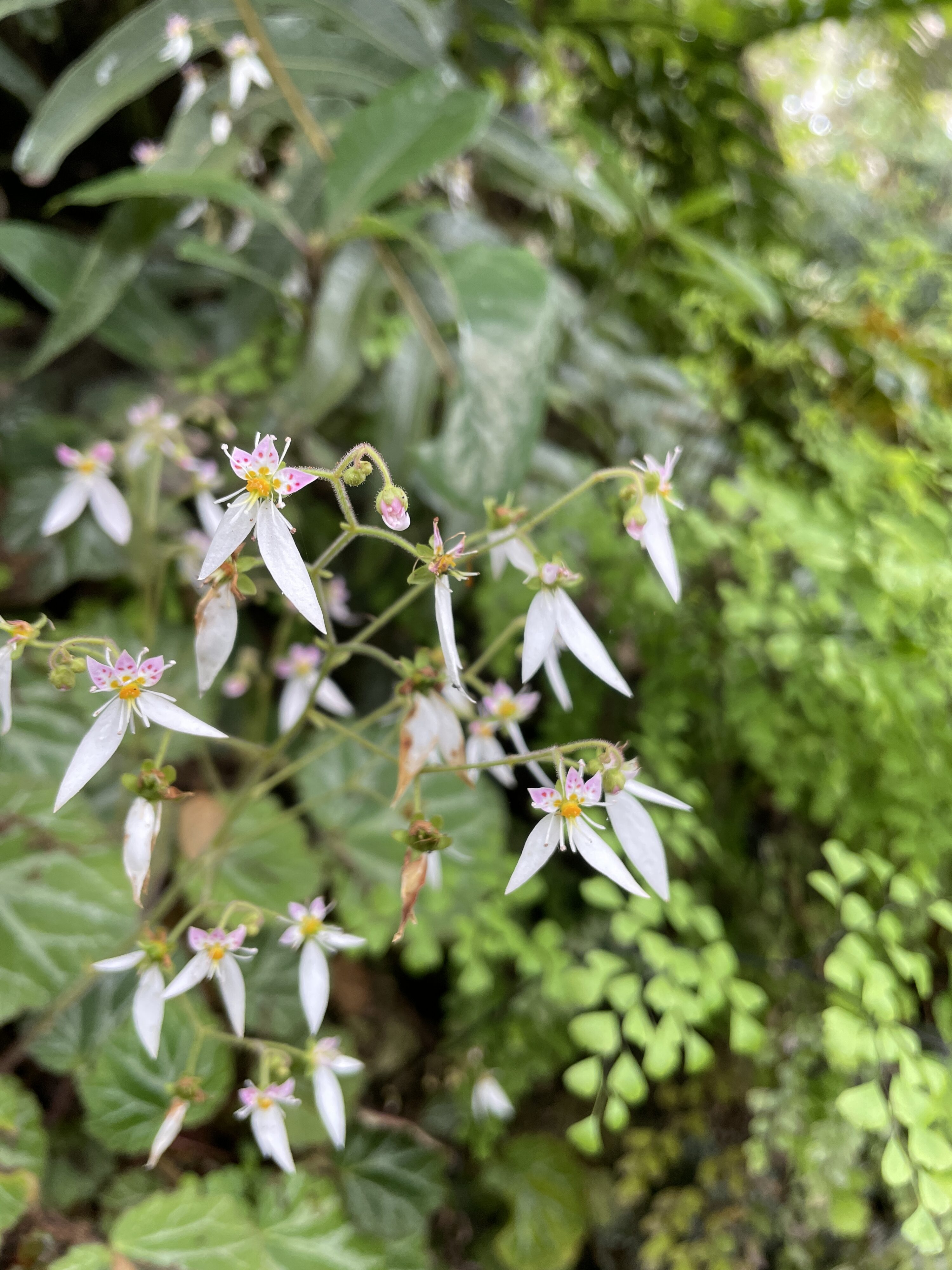
-
Aloe sabaea
Yemen tree aloe
Highlight Month:
March
Nativity:
It is found in southwest Saudi Arabia and western Yemen and grows in a wide distribution on dry, rocky open hillsides.
Growth Habit:
Aloe sabaea is the tallest aloe from the Arabian Peninsula and its unbranched trunk can reach heights of 9-12 feet. Three-foot-long pale green leaves with small white marginal teeth emerge in drooping side-facing rosettes, imparting a melting appearance to the entire plant. When damaged, the leaves ooze a clear exudate smelling strongly of rat urine, indicating the presence of toxic hemlock alkaloids. This species blooms in mid-winter with coral orange flowers held on a branched inflorescence. Yellow-flowered forms exist but are rare in cultivation.
Growing Requirements:
Full sun, well-drained soils, hardy to 27°F
Features:
The specific epithet sabaea comes from the name for an ancient group of South Arabian people, the Sabaeans, who founded the Kingdom of Saba (800-400 BCE), in what is now present-day Northern Yemen and the Asir Province of Saudi Arabia. Researchers at Kew Gardens speculate A. sabaea evolved from a radiation event of Aloe into the Arabian Peninsula about 5 million years ago.
Where at Lotusland:
Aloe Garden
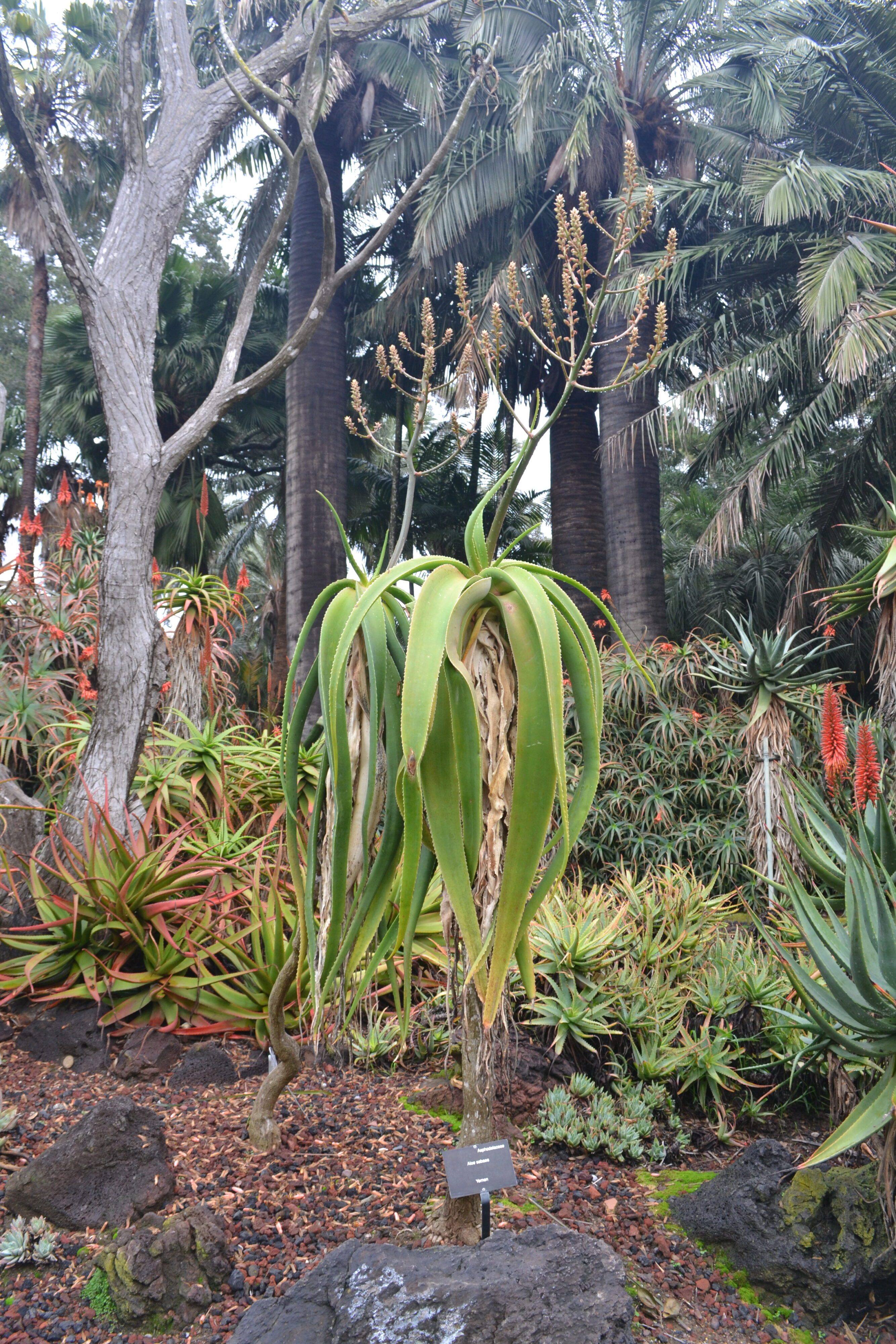
-
Hardenbergia violacea ‘Happy Wanderer’
lilac vine, purple coral pea, false sasparilla
Highlight Month:
March
Nativity:
H. violacea is native to Australia. ‘Happy Wanderer’ is a cultivar selected for fast growth, with purple flowers.
Growth Habit:
A fast-growing vine, climbing on twining stems to 15 feet.
Growing Requirements:
Light shade to full sun, drought tolerant once established but grows best in well-drained soil.
Features:
Lilac vine blooms from late winter through early spring with dense, cascading clusters of small pinkish purple flowers. It makes a good screen for fences, or for an impressive winter flower display on a trellis.
Where at Lotusland:
Hardenbergia grows on the Kiosk in the Australian Garden.
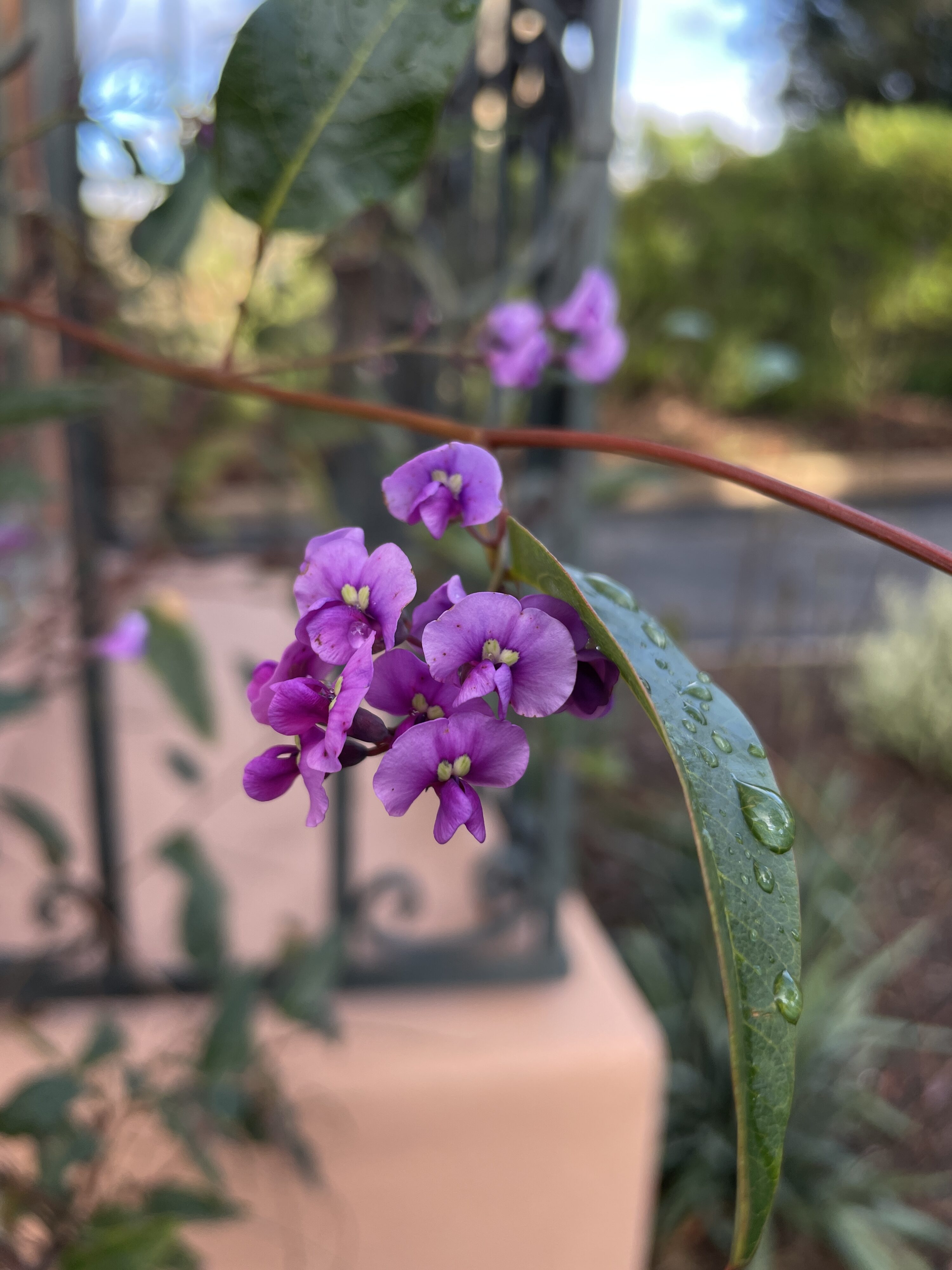
-
Veltheimia bracteata
forest lily, cape lily, boslelie
Highlight Month:
March
Nativity:
southeastern South Africa
Growth Habit:
Veltheimia bracteata is a winter-growing bulb from southeastern South Africa. In habitat, it grows in coastal dune forests under tree canopy in full to part shade and receives both summer and winter rainfall. It flowers in the spring with a one-foot tall inflorescence bearing tubular bubble-gum pink flowers and many yellow and pastel-flowered forms exist in the trade. V. bracteata can be propagated from bulb offsets, or from seed which form in three-winged papery capsules.
Growing Requirements:
V. bracteata undergoes a brief period of summer dormancy before the glossy green leaves reemerge in the fall/winter. In cultivation, it is best to cut back on summer watering to prevent the bulb from rotting. This species is hardy to USDA Zones 9b-11.
Features:
The genus only contains one other species, Veltheimia capensis, from winter-rainfall regions of western South Africa. This species is adapted to full sun, has bluish-gray leaves, and flowers in the fall/early winter. Both species are pollinated by birds. The genus name honors August Ferdinand von Veltheim, a German mineralogist and geologist (1741-1801).
Where at Lotusland:
Fern Garden
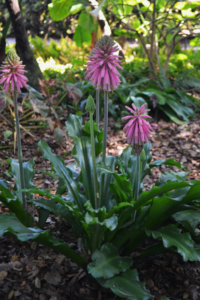
-
Zantedeschia aethiopica ‘Green Goddess’
Green Goddess calla lily
Highlight Month:
March
Nativity:
Garden Origin
Growth Habit:
Calla lilies are evergreen in moist sites in the Santa Barbara area, although they can return from their drought-dormant tubers quite successfully once fall rains have begun. Their large leaves, 1 ½ to 2-foot blades atop 3-foot stems are arrowhead shaped. They begin blooming in very early spring with tall stalks rising above the leaves. The cultivar ‘Green Goddess’ has a funnel-shaped spathe surrounding the familiar yellow spadix that shades from pure white in the center to an elongated tip striped with emerald green.
Growing Requirements:
Calla lilies naturally grow in bogs, so constant moisture is required to keep them year round. Bright shade or filtered light promotes vigorous growth and good flower production. They may even be planted in shallow water in ponds.
Features:
This cultivar is larger than the regular calla lilies and provides a lush, tropical look to the shade or water garden.
Where at Lotusland:
Fern Garden
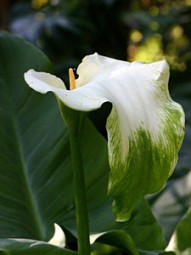
-
Aloe speciosa
tilt-head aloe
Highlight Month:
March
Nativity:
South Africa
Growth Habit:
This arborescent aloe grows to 15’ or more with a single rosette of grayish-green leaves atop an attractive “skirt” of older leaves. The rosette usually tilts toward the direction of the greatest sun exposure. The large, unbranched inflorescences have deep pink buds that mature to greenish white flowers with reddish brown stamens.
Growing Requirements:
Aloe speciosa is very easy to grow. It requires full sun and good drainage. Water only to get plants established. It is hardy to 25 – 30 degrees Fahrenheit.
Features:
This is one of the later aloe to bloom at Lotusland.
Where at Lotusland:
Along the Main Drive near the Sycamore Canyon Gate and in the Aloe Garden.
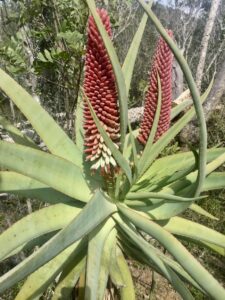
-
Grevillea paniculata
kerosene bush
Highlight Month:
March
Nativity:
Southwestern Australia
Growth Habit:
A woody shrub up to 3 feet in height that can spread 10 feet or more in width. Very drought tolerant, it makes a soft-looking mound of light green, fine-leaved foliage.
Growing Requirements:
Full sun, no supplemental water once established.
Features:
The narrow leaves are deceptively soft-looking. In actuality, they have sharp tips that can cause dermatitis. Wear long sleeves and gloves when working with this plant. In spring, it is clothed with clusters of small white flowers.
Where at Lotusland:
In the Australian Garden around the parking lot.
-
Salix babylonica
weeping willow
Highlight Month:
March
Nativity:
Northern China
Growth Habit:
Weeping willow trees grow rapidly to as high as 50 feet. The pendant branches form a fountain fo greenery with leaves touching or nearly touching the ground enclosing a canopy nearly as wide as it is high.
Growing Requirements:
Full sun and regular moisture; it favors wet sites at the edge of natural waterways.
Features:
This tree has been widely cultivated for thousands of years for its graceful shape. It can be a focal point in the appropriately large and moist site. The bright green leaves emerge in early spring.
Where at Lotusland:
In the Japanese Garden at the edge of the pond.
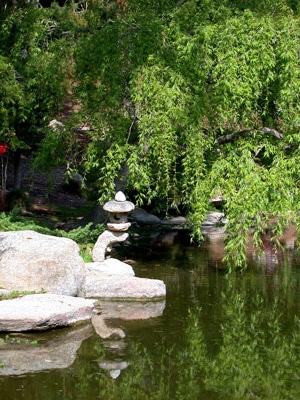
-
Rhododendron formosum
rhododendron
Highlight Month:
March
Nativity:
Assam, Myanmar
Growth Habit:
This species rhododendron has small leaves and will become a rounded shrub 4 to 6 feet in diameter.
Growing Requirements:
A native to elevations of about 2000 feet in the Himalayas, this species can withstand moderate frosts. It can be grown in full sun where summers are cool making it suitable for coastal southern California. Soil should be acidic and rich in organic matter.
Features:
Relatively large flowers in clusters make this species a standout. The pink buds open to blush white.
Where at Lotusland:
Japanese Garden
